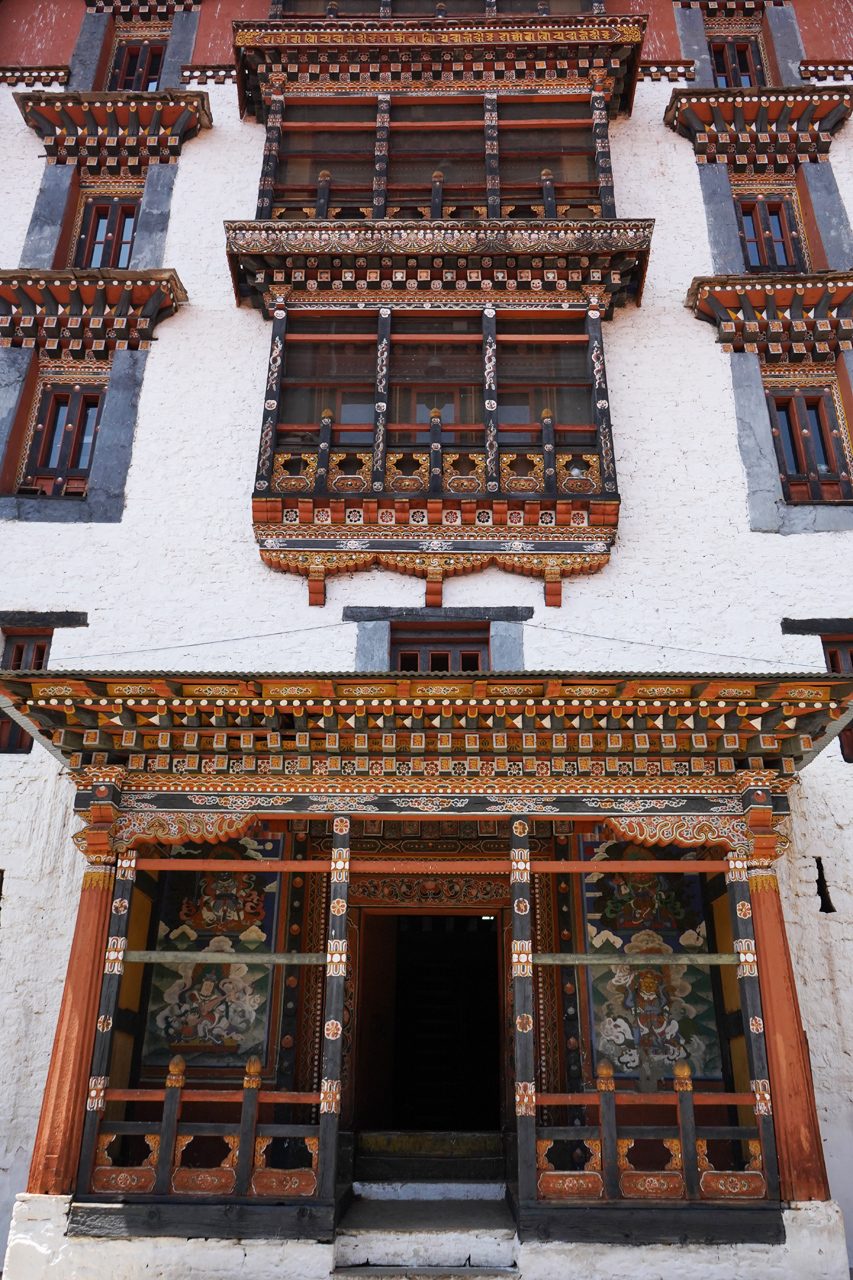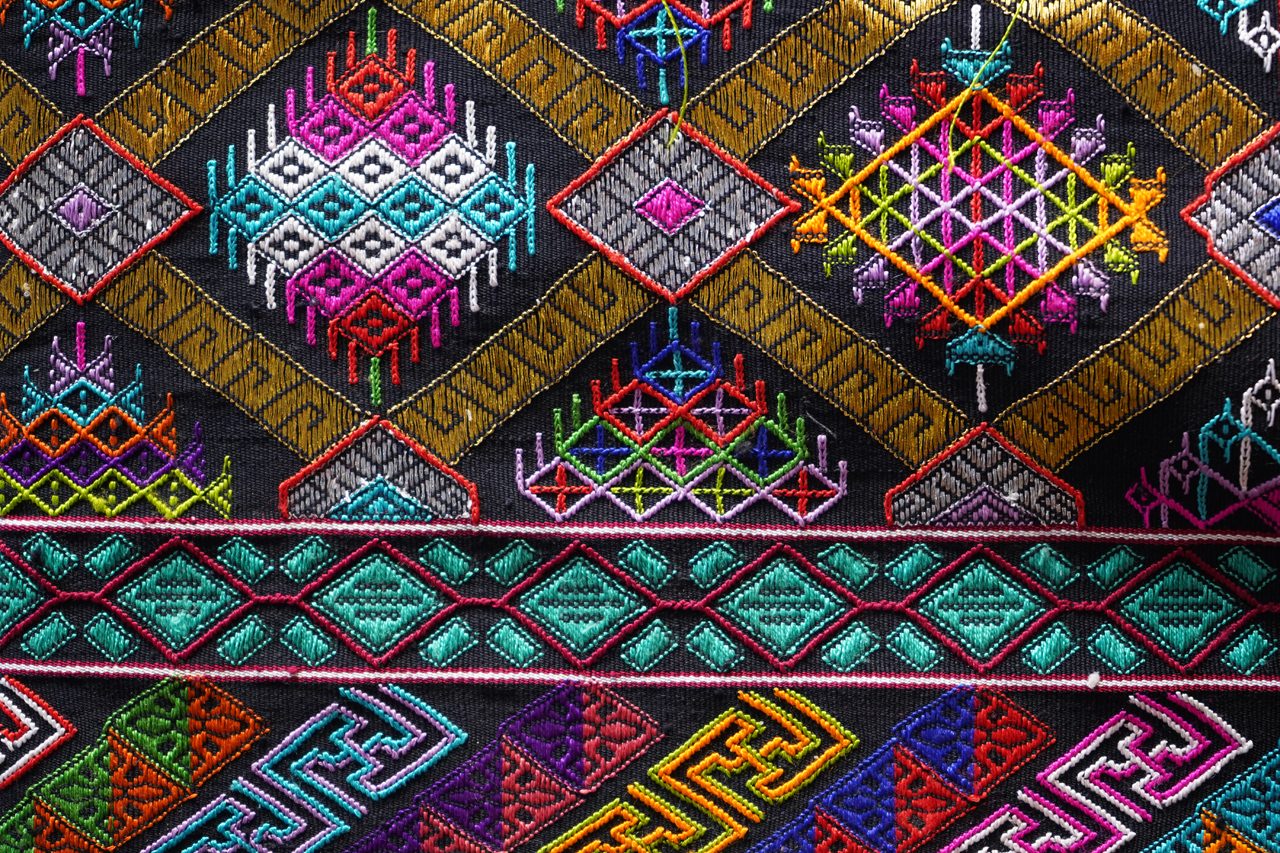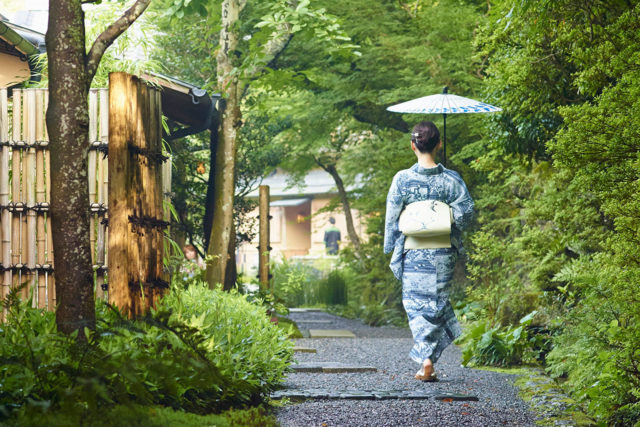“No hurry, no worry.” The four words, stencilled onto a yellow concrete plaque by the side of the highway, flashed by as we sped from the airport through the torrential downpour of Cyclone Fani, dodging landslides as vertiginous valley walls loomed overhead, while a yawning exhaustion gnawed at me courtesy of a red-eye flight from Hong Kong via Bangkok. Bhutan – “the happiest country in the world!” as numerous friends had exclaimed upon hearing my own travel plans – was so far failing to live up to expectations.
The rain persisted as we cruised into the capital of Thimphu, its many traditional houses that would normally delight under a blue sky failing today to overcome the oppressive greyness. Yet, as our four-wheel drive meandered upwards on urban roads conspicuously devoid of traffic lights, the city fell away and was replaced by thickets of pine, and before long we pulled into the walled courtyard of Amankora, the first foreign-owned resort to establish a foothold in the country, and which by many is still regarded as its best. After a swift welcome by a staff member wearing the traditional kira dress, a welcome drink of hot apple cider, and a lunch of pumpkin soup and seared hamachi within the soaring, wood-panelled dining hall, suddenly, things were looking more promising.
Breathlessly hailed by countless publications as “the new must-see destination” every year since at least the mid-2000s, Bhutan today remains much talked-about yet little visited (there were 274,000 tourist arrivals in 2018, compared to neighbouring Nepal’s 1 million), despite all the hallmarks of a tourism gold mine: an idyllic and deeply spiritual society, a photogenic royal family, and awe-inspiring temple architecture set amongst pristine valleys and dramatic, snow-capped mountain ranges.
At the mention of this Himalayan kingdom, Hongkongers are more often than not reminded of the marriage of two of the city’s most prominent homegrown thespians, Tony Leung and Carina Lau, which took place at the COMO Uma Paro resort in a relatively low-key Buddhist ceremony in 2008. Yet, Bhutan has also played host to the likes of Jet Li, Leonardo DiCaprio, Richard Gere, Cameron Diaz, who have sought out the country to escape the glare of celebrity, as well as for its spirituality. The late Sir David Tang, who, as one of Amankora’s first guests following its opening in 2004, said of the experience: “It was a perfect balance between our urban sensibilities and a spiritual sense of the wilderness.”
A monk goes about his duties at Rinpung Dzong in Paro.
Photo: Gavin Yeung
Bhutan’s relative obscurity is, in large part, by the design of its government. Except for Indians, all tourists are required to book their trip through a local tour operator and pay a daily tariff of US$250 per day during the high season. A guide must accompany you at all times, which essentially stamps out all prospect of independent travel. The fruits of these efforts, however, are clear to those who arrive.
On an early morning hike to Tiger’s Nest – a 17th-century gravity-defying Buddhist monastery and arguably the country’s most Instagrammed landmark – tourists are sparse and viewpoints on the vertigo-inducing trail are mercifully devoid of crowds, offering unfettered vistas of the religious site, which is comprised of a clutch of gold-roofed, white and sienna-painted temples clustered on a slim outcrop halfway up a sheer cliff face.
Within the sacred compound (legend has it that the Second Buddha, Guru Rinpoche, came here on the back of a flying tiger, hence the name), labyrinthine corridors thick with the incense of juniper and cypress open in an instant onto breathtaking panoramas of the pastoral Paro Valley. The cramped altar rooms of the four temples within, so easily at risk of overcrowding, are instead still with the weight of history, their walls covered with paintings of the Five Buddhas who look down with infinite serenity at all those who come.

A facade in Rinpung Dzong in Paro. Buildings in Bhutan must adhere to a strict visual code that preserves the country's unique architectural tradition.
Photo: Gavin Yeung
“No hurry, no worry.” The mantra neatly encapsulates the effects of the economic philosophy of Gross National Happiness (GNH). A term first coined by the fourth king Jigme Singye Wangchuck in 1972, shortly before the country opened up to tourism two years later, the economic index prioritises the happiness of Bhutan’s citizens over economic productivity, an attitude that today manifests itself in an unhurried pace of development.
As we watched devotees complete multiple circumambulations, or kora, around Thimphu’s Memorial Stupa one overcast afternoon, Nidup, my bookish, soft-spoken guide who could easily pass as a Buddhist scholar, elaborated on the deliberately slow pace of development espoused by GNH in an effort to avoid the “mistakes” of overeager modernisation committed by “some other countries” on the pitfall-filled path to prosperity. To this end, Bhutan has upheld its own traditions while expelling outside influences, at times with authoritarian fervour. Television was only introduced in 1999 and smoking cigarettes requires a license, and just this past April, the government permanently banned plastic bags nationwide.

Embroidery is regarded as a high art in Bhutan, denoting a person's ethnic group, home valley and social class. The most intricate weaves can take years to complete.
Photo: Gavin Yeung
The kingdom’s official religion of Vajrayana Buddhism lends itself superbly to this pursuit of happiness, thanks to its emphasis on subduing the ego and living in harmony with nature. The constitution mandates that 60 percent of the country remains forested, and today, Bhutan is the world’s only carbon-negative country. Meanwhile, Nidup informs me, the Bhutanese are more likely to engage in community service in their free time than travel overseas.
As if to drive this point home, the prime minister of Bhutan is known to spend his Saturdays performing surgeries at a public hospital, to “de-stress” from his parliamentary duties. And one day, as we drove past groups of uniform-clad schoolchildren swinging large garbage bags by the roadside, Nidup explained that students embark on monthly trash-picking field trips, no doubt to instill a lifelong sense of civic responsibility to their surroundings.
Given these impeccable philosophical credentials, the Land of the Thunder Dragon is often painted as a wellness destination, and Amankora capitalises on this reputation as such. Its five lodges across the country are mostly situated in picturesque rural surroundings – located at the crest of a valley or beside a snow-fed river – where the air takes on the fresh quality of a clear brook. In the Paro lodge, the guestrooms are nestled in a pine forest bisected by small streams, and if you’re lucky as I was, your room might even come with a view of the local dzong, or traditional fortress, through a break in the trees.
A week-long itinerary covers all five lodges, whisking guests across the breadth of the country and peppering the journey with daytime spiritual experiences such as sunrise meditation sessions, lighting butter lamps, and prayer flag bathing. To unwind, the traditional hot stone bath at the spa of each lodge works wonders in soothing aching joints – if the khempa herb-infused bath water starts to cool, ring a bell to summon an attendant who will dunk a baking hot boulder into the tub through a wooden chute in the wall, thereby returning the temperature to a comfortable degree of heat.
Dancers perform the drum dance of Drametse at Amankora's Thimphu lodge.
Photo: Gavin Yeung
As with any journey, the biggest realisations come in the moments of stillness in-between, yet Bhutan, with all its mysticism and grand architecture and bucolic scenery, only seems to amplify those moments all the more. Back at the Thimphu lodge as I watched four women perform a medley of Bhutan’s folk dances while singing the songs of their forebears, I felt a deep sense of privilege to be able to witness a country on the precipice of change, before the inevitable tide of modernisation sweeps away the pervading sense of innocence here.
“People are beginning to forget that being happy doesn’t mean having to own things,” my photographer Jigme’s words echoed in my mind. “It’s about being content with what you have, and that’s what we’re losing.” In that moment, at least, I was content to simply be there, witnessing the bashful giggles exchanged between the dancers as they swayed into the fading light.
Editor
Gavin Yeung









